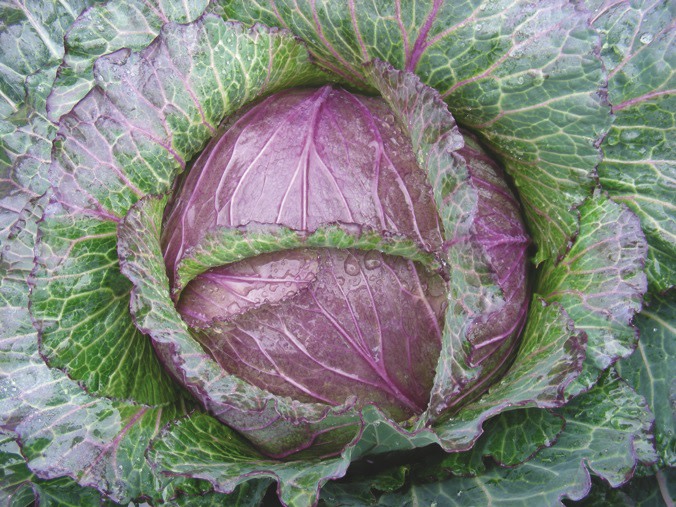(105 days) F-1 hybrid.
Lovely savoyed pinkish-purple outer leaves dusted with grey are nice as garnish, and light green interior is great for salads and slaw. Solid medium-large 3–6 lb heads of 6–10" diameter with densely packed innermost leaves are very sweet with a spicy nip. Color intensifies and flavor sweetens in fall.
Overwintered for Donna Dyrek in central Maine. Long storage in the cellar. Resists FY. Tested negative for BR and BL. White or yellow certified-organic coating.
Supplier Transparency:
④ Multinational corporations not to our knowledge engaged in genetic engineering








